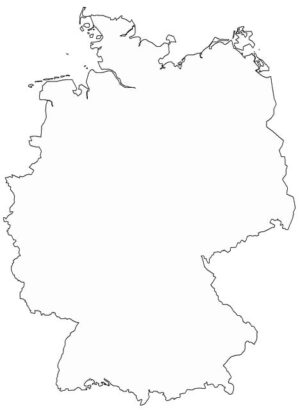In today's digital era, local search optimization (Local SEO) is crucial for businesses aiming to thrive locally. Mastering NAP Schema Markup enhances online visibility and drives offline sales by providing search engines with accurate business details like addresses, phone numbers, and operating hours. This structured data format ensures correct display on local listings, maps, and organic results, making it easier for nearby customers to find and engage with the business. Regularly updating and optimizing this markup is essential for adapting to changing search algorithms and user behaviors, ensuring a strong online presence and enhanced credibility in local search results.
Local search visibility is paramount for businesses targeting specific geographic areas. Structured data, particularly NAP (Name, Address, Phone) schema markup, plays a pivotal role in enhancing local SEO efforts. This article delves into the impact of local search on businesses and explores how implementing NAP Schema Markup can significantly improve online visibility. We’ll cover best practices for optimizing location data, rich snippet integration, and measurement strategies to ensure continuous improvement.
- Understanding Local Search and Its Impact on Businesses
- Introduction to Structured Data and NAP Schema Markup
- The Role of NAP Implementation in Local SEO
- Enhancing Search Visibility with Rich Snippets
- Best Practices for Optimizing Physical Location Data
- Measuring Success and Continuous Improvement
Understanding Local Search and Its Impact on Businesses

In today’s digital era, understanding local search is crucial for businesses aiming to thrive in their respective communities. Local search refers to users’ queries on search engines for products or services within a specific geographic location. Given that most consumers turn to online resources when seeking local businesses, optimizing for these searches can significantly impact a company’s visibility and success. The power of local SEO extends beyond increasing website traffic; it directly contributes to offline sales and customer acquisition.
Businesses with physical locations or service areas must pay close attention to their Local SEO strategy, particularly when it comes to structured data implementations like NAP Schema Markup, Local SEO JSON-LD, and Google Maps Schema for GMB (Google My Business). These tools enable businesses to provide search engines with precise information about their entities, including addresses, phone numbers, and operating hours. By implementing these schemas, companies can ensure their details appear accurately on local business listings, maps, and organic search results, thus attracting potential customers looking for services within their area.
Introduction to Structured Data and NAP Schema Markup

Structured data is a powerful tool that helps search engines understand and interpret information on websites more effectively. It provides a structured format to present complex data, making it easier for search algorithms to crawl and index web pages. When it comes to local businesses, Structured Data and NAP (Name, Address, Phone number) Schema Markup play a pivotal role in enhancing online visibility.
NAP Schema Markup is a specific type of structured data that provides detailed information about a business’s location and contact details. By implementing this schema on your website, you enable search engines like Google to identify and display your business accurately in local search results, often showcasing it in a dedicated map pack. This process significantly improves discoverability for businesses with physical locations or service areas, ensuring their potential customers can easily find them online.
The Role of NAP Implementation in Local SEO

The implementation of NAP (Name, Address, Phone number) Schema Markup is a cornerstone in enhancing local search visibility for businesses with physical locations or service areas. This structured data helps search engines like Google accurately understand and display business information on Local SEO result pages, commonly known as Map Packs. By integrating NAP into JSON-LD or Google Maps Schema, businesses ensure their contact details are easily verifiable and consistent across online platforms.
This strategy plays a pivotal role in optimizing local search rankings and driving targeted traffic. When search engines crawl websites with well-formatted NAP data, they can provide relevant local results to users searching for specific products or services within a certain area. As a result, businesses with effective NAP implementation often appear higher in local search queries, increasing their chances of capturing potential customers from the surrounding region.
Enhancing Search Visibility with Rich Snippets

One of the most effective ways to enhance search visibility for businesses with physical locations is through structured data implementation, specifically using Rich Snippets. By incorporating Schema Markup, such as NAP (Name, Address, Phone number) Schema, into your website’s code, you provide search engines with essential business information in a structured format. This not only improves the accuracy of local search results but also increases click-through rates due to enhanced snippet displays.
Additionally, leveraging Local SEO JSON-LD and Google Maps Schema further optimizes your business’s online presence. These schema types offer detailed information about locations, services offered, and even customer reviews, which are all valuable for local search algorithms. When properly implemented, this structured data creates compelling Rich Snippets that catch users’ attention, making your business stand out in a crowded local search landscape and driving more relevant traffic to your doorstep.
Best Practices for Optimizing Physical Location Data

To maximize the benefits of structured data for local search visibility, businesses should adopt best practices when optimizing their physical location data. First and foremost, implementing NAP (Name, Address, Phone number) Schema Markup is essential. This simple yet powerful tool ensures your business information is consistently structured and easily identifiable by search engines across various platforms.
Additionally, leveraging Local SEO JSON-LD and Google Maps Schema can significantly enhance local visibility. The former provides rich snippets in search results, while the latter helps display precise business locations on maps. For businesses with service areas beyond a single physical location, Service Area Markup is crucial. This structured data allows search engines to understand the geographic scope of your services, leading to more accurate local search results and improved customer reach.
Measuring Success and Continuous Improvement

Measuring success is a vital step in optimizing local search visibility. By utilizing tools that track online reviews, website analytics, and local listing performance, businesses can gauge the effectiveness of their structured data implementation. Analyzing user engagement, click-through rates, and conversion metrics specific to local searches provides insights into what’s working and areas for improvement. Regularly reviewing these metrics ensures the business stays agile in its approach, making adjustments as needed to enhance local SEO efforts.
Continuous improvement is key to maintaining a strong online presence. As search algorithms evolve, so do user preferences and behaviors. Adapting structured data strategies based on these changes includes updating NAP Schema Markup, integrating new Local SEO JSON-LD formats, and optimizing Google Maps Schema for enhanced accuracy. Regular updates ensure the business’s information remains current and accurate across all relevant local listing platforms, solidifying its visibility and credibility in the local search landscape.
